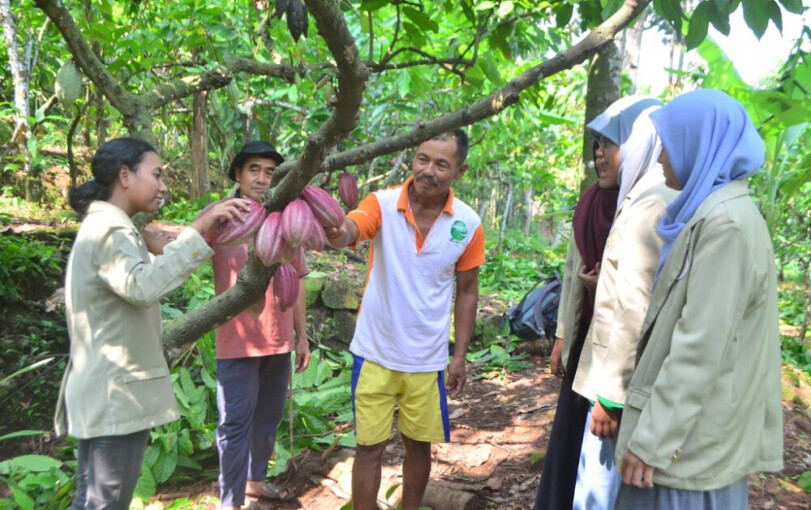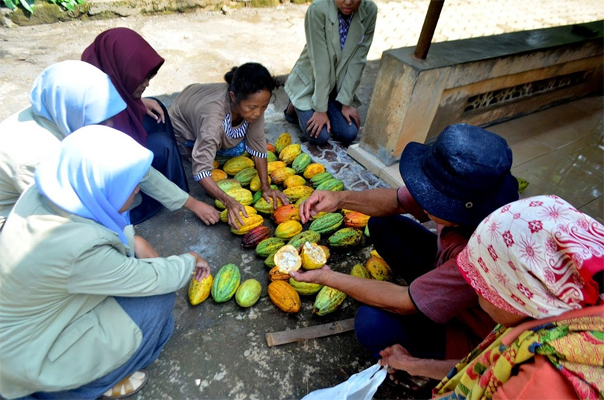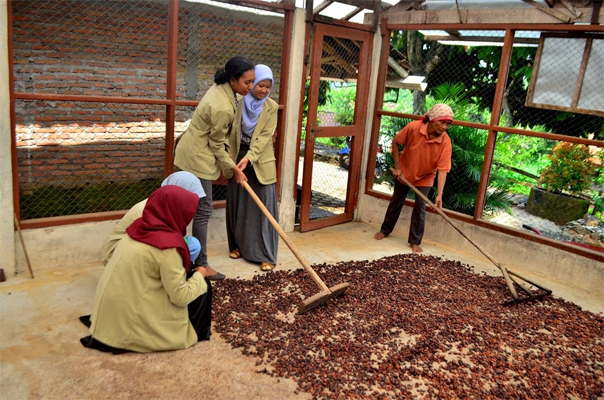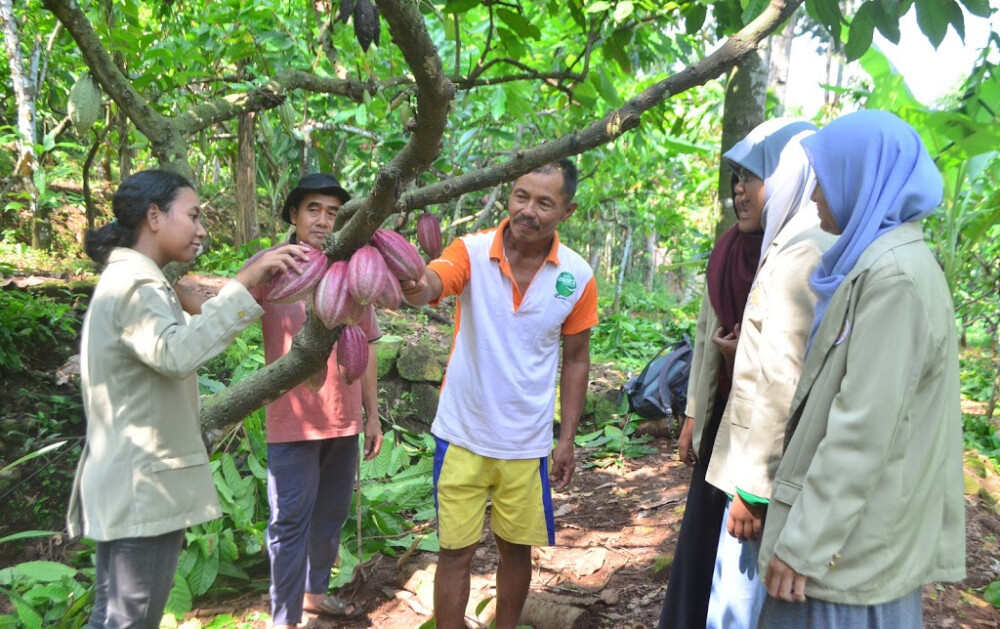Indonesia is world’s third biggest producer of cocoa after Ghana and Ivory Coast. Nationally, the production reaches as high as 700,000 tonnes.
Unfortunately, this potential has not been optimally explored by the Indonesian people. Most only sell the fermented cocoa instead of making cocoa into other products with added value.
The sub-district of Putat in Gunung Kidul regency is one of cocoa producer areas in Yogyakarta, but the production there is still lacking due to low skills of human resource.
Concerned with this condition, five students of Faculty of Agriculture and Faculty of Agricultural Technology through Student Creativity Programme – Community Service were trying to maximise the potential of cocoa agribusiness, making side-production of cocoa that they named as Cacaopack. Those students are Dewi Purnama Sari, Choirun Nisa, Wahyu Setyaning Budi, M. Rakan Fauzi, and Eleonora Valentia SM.
The students give mentoring to 50 cocoa farmers in processing cocoa waste products into products with economic value, or making nata from the cocoa pulp.
Dewi said usually the local people need 20% of pulp as starter in fermentation process. The bigger remainder which is 80 percent is, unfortunately, thrown away. “The pulp waste will be processed into nata de cocoa,” she said.
The students also train them in making processed products such as compost, made into flour for painting, liquid soap, feeds, and handicrafts from dried cocoa peels.
Choirun Nisa added they not only help the farmers in cocoa waste production, but also product marketing. It is expected that with this training, skillful and innovative human resource can be generated. In the future, the farmers can develop other cocoa products independently, thus improving their income.
“The cocoa waste processing is also expected to be able to improve the agrotourism and agribusiness potential of Patuk sub-district,” she concluded.






